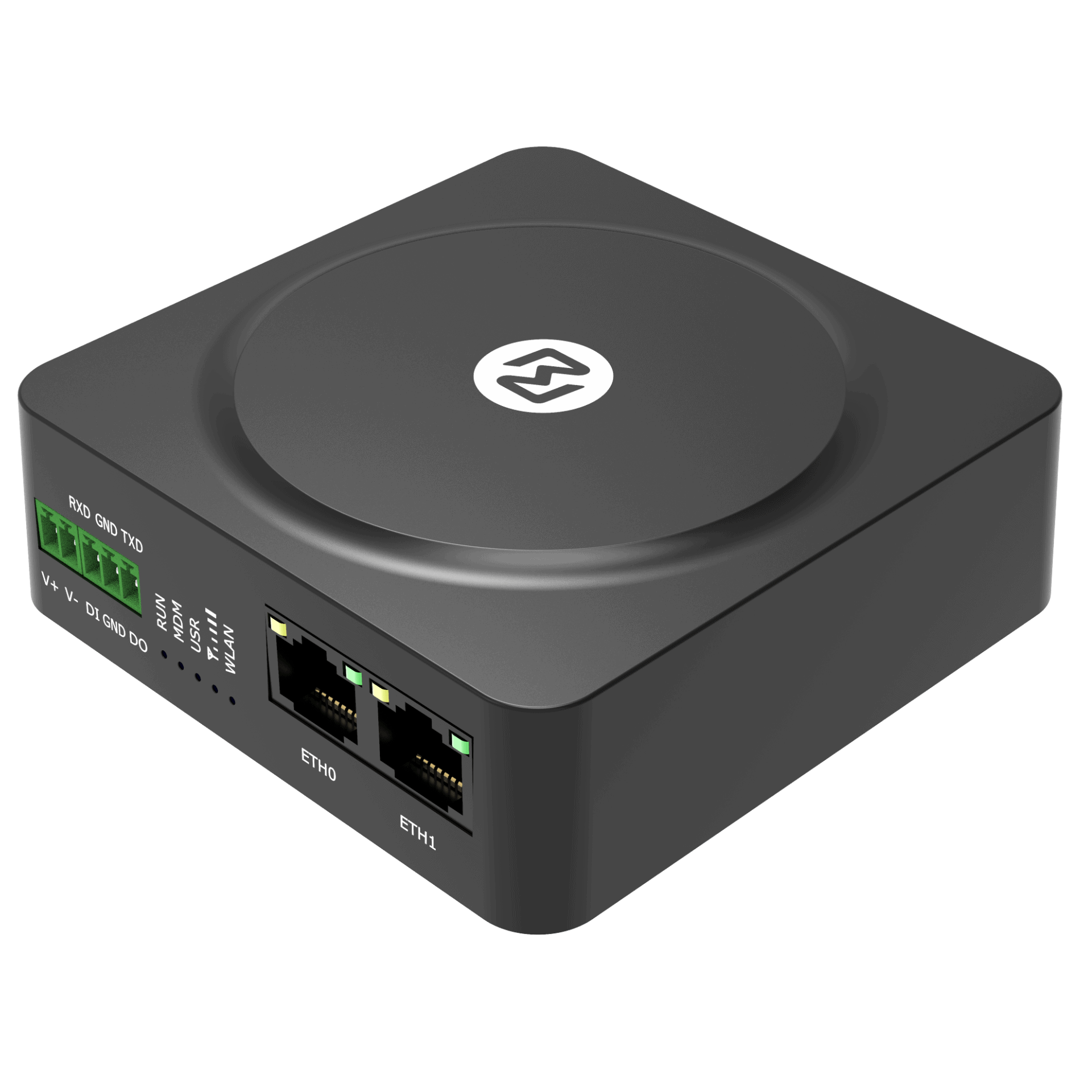Connecting Remote Consultations: Telemedicine Endpoints over 4G/LTE with the R1511
A Robustel Application Example
Application Example – Fast Facts
Industry
Smart Cities, Healthcare, Telemedicine and Remote Patient Care
Product(s)
Robustel R1511 4G/LTE Router; RCMS (RobustLink, RobustVPN)
Challenges
Many telemedicine services depend on home broadband or ad-hoc clinic networks that were never designed for medical consultations. Dropouts, poor upstream bandwidth, and unmanaged consumer routers undermine video quality, clinician trust, and patient experience. IT teams struggle to standardise connectivity for remote clinics, telehealth carts, and diagnostic stations spread across regions.
Expected Outcomes
A repeatable connectivity model where every telemedicine endpoint whether in a clinic, pharmacy, or patient home—comes online with predictable performance and security. Operations teams gain the ability to see, manage, and troubleshoot devices centrally, so clinicians can focus on care rather than connection problems.
Connecting patients and clinicians when the network really matters
Telemedicine has moved from pilot to standard practice. Hospitals, clinic groups, and service providers now rely on video consultations and remote diagnostics as core parts of their care model, not just as an emergency measure. That brings a simple but hard requirement: when a clinician clicks “join”, the session has to work. Patients cannot be expected to understand Quality of Service, router firmware, or how to prioritise video traffic on their home network.
For healthcare IT and telehealth operations teams, the challenge is to deliver a stable, secure network edge in environments that they do not fully control. Remote clinics may sit on older copper links. Pharmacies, care homes, and employer sites each have their own local IT. Home users can be anywhere on the cellular or broadband map. This is where an embedded, managed 4G/LTE router like the R1511, combined with RCMS, gives organisations a way to standardise the “last ten metres” of connectivity for telemedicine without redesigning every local network from scratch.
Business Challenges
Delivering telemedicine at scale is not just about choosing a video platform. It requires a network approach that works in small clinics, shared spaces, and patient homes, all while respecting clinical workflows and regulatory expectations. Below are some of the recurring pressures that operations and IT teams face when connecting telehealth endpoints.
- Unreliable last-mile connectivity: Many telemedicine deployments begin by “using whatever Internet is available” at the site. That might be an old broadband router, shared office Wi-Fi, or a home connection serving multiple devices. When bandwidth fluctuates or upstream capacity is limited, video calls freeze, audio drops, and clinicians lose confidence in the service. Troubleshooting is hard because every site looks different and staff often do not know how the local network is configured.
- Security, privacy, and regulatory expectations: Telemedicine sessions involve protected health information and, in some cases, remote access to medical devices or clinical records. Using unmanaged consumer routers and unknown Wi-Fi networks makes it difficult for IT to prove that traffic is encrypted, segmented, and handled according to internal policy and external regulation. Each new site can raise fresh questions from security teams and auditors, slowing down adoption and raising the perceived risk of the service.
- Scaling operations with limited technical staff: As telemedicine expands from a few flagship sites to hundreds or thousands of endpoints, the support model often breaks. Manually configuring routers, shipping pre-configured laptops, and walking staff through local network changes does not scale. Small IT teams are forced into high-touch support, dealing with one-off site issues instead of managing the service as a whole. Without a standardised, remotely managed connectivity layer, growth quickly translates into growing operational overhead.
Solution Overview

Telemedicine endpoints whether they are carts in clinics, diagnostic stations in pharmacies, or compact kits sent to patient homes—are equipped with a Robustel R1511 router to provide a controlled 4G/LTE path for video and clinical data. The R1511 connects local equipment over Ethernet (and, in variants where appropriate, Wi-Fi), while using a dedicated SIM for uplink. Traffic is routed over secure tunnels back to the healthcare provider’s core environment or service partner, bypassing unknown local routers and untrusted Wi-Fi where required.
RCMS sits above this fleet, giving operations teams a single console to onboard, configure, and monitor every deployed router. Templates define standard settings for different use cases (home kit, satellite clinic, pharmacy booth), while remote diagnostics help support staff quickly understand what is happening at a site without asking local users to log into anything. Firmware and configuration updates are rolled out in controlled batches, so the service remains consistent as the fleet grows. The result is a repeatable pattern: plug in the kit, power it on, and the R1511 and RCMS together take care of bringing the telemedicine endpoint online in a predictable way.
Why choose the R1511 and RCMS:
- Compact form factor for clinical and home environments: The R1511 is small enough to fit inside telehealth carts, wall cabinets, or home kits without adding clutter. It does not force a change to furniture or clinical layout, which makes it acceptable to both clinical staff and patients.
- Industrial reliability for critical sessions: Designed as an industrial router, the R1511 is built for continuous operation in a range of conditions. This matters for telemedicine deployments where devices may be powered on for long periods in rooms that are not designed as traditional IT spaces.
- Dedicated 4G/LTE path for telemedicine traffic: By using a SIM and mobile network connection, the R1511 provides a separate path for telemedicine sessions that does not depend on existing local Wi-Fi, guest networks, or shared office broadband. This reduces contention and removes many unknowns from the troubleshooting equation.
- RCMS for fleet-wide visibility and control: RCMS allows IT teams to see the status of every R1511 in the field, push configuration templates, and manage firmware centrally. This turns a distributed set of telemedicine sites into a manageable fleet, rather than a collection of unique one-off installs.
- Security posture aligned with healthcare needs: The combination of R1511 and RCMS supports encrypted tunnels, controlled remote access, and auditable changes. This helps healthcare organisations align the connectivity layer with their security policies and regulatory commitments around patient data.
Expected Customer Outcomes
Telemedicine programmes succeed when the technology supports clinical workflows quietly and reliably. With a standardised connectivity layer in place, both clinical leaders and IT can focus on service quality rather than constant firefighting.
What success looks like for the key stakeholders (clinical operations leaders, IT and security teams, telehealth service owners) and the secondary stakeholders (device manufacturers, service providers, and field installers):
- Stable sessions for clinicians and patients: Consultations connect consistently, with fewer video and audio issues caused by local network conditions. Clinicians can concentrate on care, and patients experience telemedicine as a dependable part of their treatment rather than a fragile one.
- Simpler rollout to new sites and programmes: Deploying telemedicine to a new clinic, pharmacy, or employer site becomes a repeatable process: ship a kit with an R1511, power it on, and bring it under RCMS management. Less time is spent negotiating local network changes, and more time is invested in training and service design.
- Reduced support burden for IT and partners: Many issues can be diagnosed and resolved from the central RCMS console, without asking local staff to access routers or describe their networks. Field installers and service partners follow a clear playbook, which cuts down on follow-up visits and site-specific workarounds.
- Clearer security story for compliance teams: Network paths for telemedicine traffic are easier to describe and document. Security teams gain better visibility of how endpoints connect, how devices are updated, and how access is controlled, which supports internal reviews and external audits.
Featured Products
Robustel R1511 4G/LTE Router

RCMS Cloud Device Management

Talk to an Expert
If you are planning or expanding a telemedicine service and need a consistent way to connect clinics, partner sites, or patient homes, our team can help you shape the right connectivity approach.
Talk to a Robustel expert about using the R1511 and RCMS as the foundation for secure, reliable telehealth deployments at scale.
